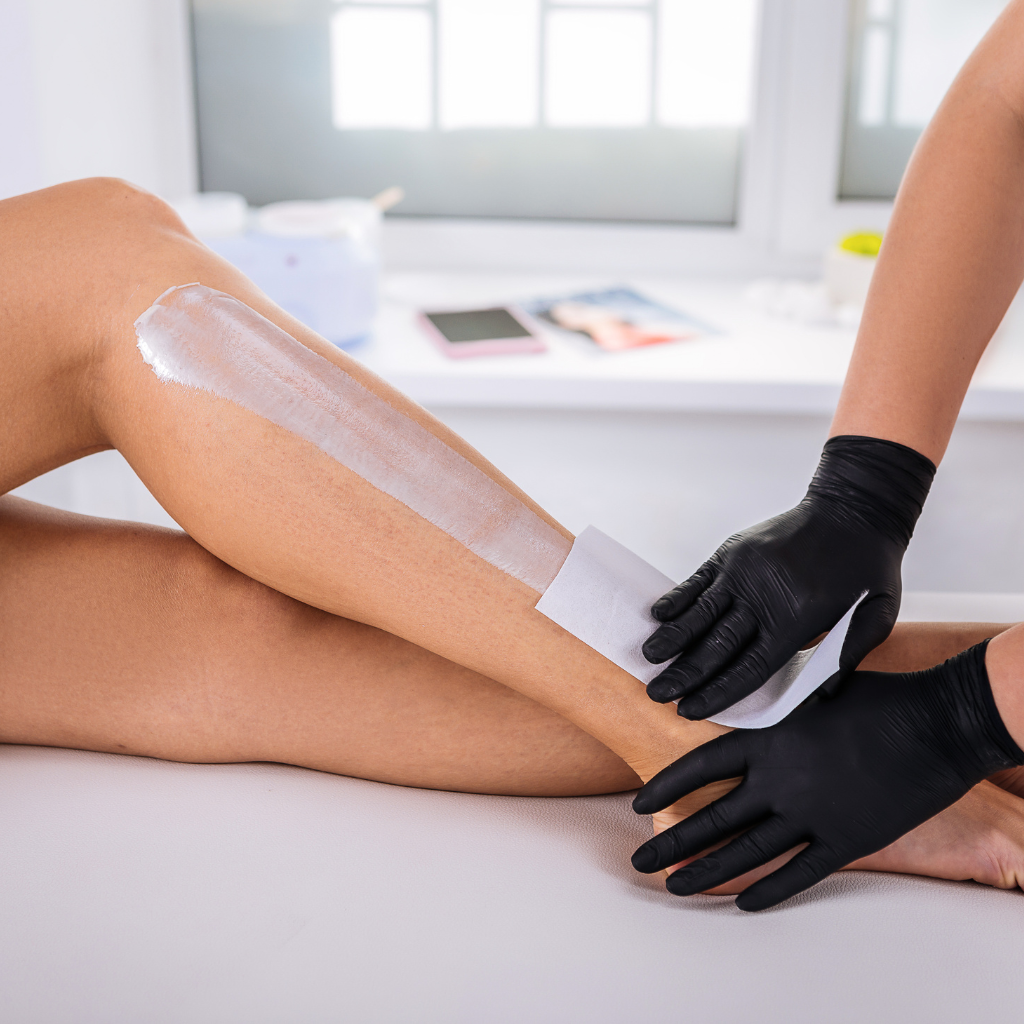Can I Wax After Laser Hair Removal: Everything You Should Know
- Home
- Laser Hair Removal
- can i wax after laser hair removal

Many people ask, can I wax after laser hair removal, or should I wax after laser hair removal at all? Laser hair removal in chennai offers a long-term way to reduce unwanted hair by targeting follicles. Knowing about waxing is important because mixing these methods can affect treatment results and skin health.
Can You Safely Wax After Laser Hair Removal?
Learners often wonder if it is safe to wax after laser hair removal treatment. This procedure focuses on hair follicles, so removing them with wax may disrupt laser efficiency. Some ask if I can wax after laser hair removal. The answer usually involves caution, especially for skin after laser therapy.
Why This Hair Removal Method Can Conflict With Laser Treatment
Laser hair removal targets the pigment in each follicle. When you remove hair at the root with wax, you may leave fewer targets for the laser. This conflict can reduce laser treatment success. Many individuals ask, can I use wax after laser hair removal? The problem is timing. If you wax too soon, the laser beam may not catch enough pigment. This results in patchy areas or prolonged sessions. Specialists suggest shaving instead of waxing after laser. Shaving allows hair to remain in its follicles, letting the laser do its job properly. Pulling hair out from the root can also trigger skin sensitivity. That may cause redness or bumps when combined with heat from laser energy. For optimal results, consider trimming or other gentle methods until your sessions are complete. This helps ensure maximum benefit from the laser procedure. Waiting four days before waxing can help, but experts advise it.
Skin After Laser: Possible Reactions
Skin after laser procedures can be delicate. Some people ask, can u wax after laser hair removal, hoping to remove stray strands quickly. However, waxing between laser treatments may irritate tender skin. Possible reactions include redness or bumps. Another concern is ingrown hairs, which can appear if follicles are disturbed. The heat from laser energy already stresses the skin, so adding a hot wax strip might cause extra inflammation. Specialists usually suggest waiting at least a week before using any strong hair removal method. Even then, gentle approaches like shaving or a mild depilatory cream are better. Some prefer alternative hair removal methods for minimal discomfort. That plan allows any targeted hairs to shed on their own. If swelling or itching occurs, a cool compress and soothing gel can help. Always ask your technician if you have questions about combining laser treatment with waxing regimens—or even if you’re considering a tattoo for laser hair removal marking or planning. This ensures fewer complications overall.
Alternative Hair Removal Methods Instead of Waxing After Laser
There are times when people ask if we can wax after laser hair removal. Many experts suggest alternative hair removal methods instead of waxing after laser sessions. Shaving, trimming, or even gentle creams can maintain smoothness without affecting follicles. These options help preserve laser hair removal results for longer periods.
Shaving or Trimming Unwanted Hair: A Good Option
Shaving is a common hair removal method that only cuts hair at the surface. It does not destroy the follicle, which is crucial for ongoing laser sessions. Trimming works similarly by reducing hair length without yanking it from the root. Both methods are considered gentler on sensitive skin. People are wondering if I can wax after laser hair removal treatment. They should know that shaving keeps the targeted strands intact inside the follicle for your next session. This approach helps ensure powerful laser pulses can eliminate those hairs more effectively. Injuries linked to shaving are usually minor nicks. Trimming is even less risky, making it a sensible choice if you want to avoid open pores or redness. Some find it helpful to shave a day or two before their laser appointment. That timing lets the laser focus its energy on hair beneath the skin’s surface. This can produce better long-term outcomes and comfort.
Depilatory Creams and Other Solutions
Depilatory creams dissolve surface-level hair. This process spares the follicle, allowing laser hair removal to target deeper structures. Some with sensitive skin may experience mild irritation, so patch testing is recommended. Another question arises: can I use wax after laser hair removal? Usually, it is better to skip waxing entirely. Instead, creams or trimming can minimize disruption. These approaches help maintain the integrity of the follicle until the next laser session. People often worry about strong smells or chemical reactions. Most modern formulas are gentle if used correctly. If you see redness, wash it off immediately. With proper care, depilatory creams provide quick hair removal without pulling from the root. This helps preserve the progress from each laser appointment. Many find these methods easy for larger areas like legs or arms. Always read instructions carefully and avoid extended contact with vulnerable skin. That keeps your routine safer overall and effective.
Waxing Between Laser Sessions: Risks and Realities
Waxing between laser procedures might seem harmless, but it can stall progress. Many wonder if they can i wax after laser hair removal or if it is safe to wax after laser. Removing hair by the root robs the laser of targets. This leads to longer treatments and inconsistent outcomes.
Safe to Wax After Laser: Truth or Myth
Some clinicians caution against waxing immediately after laser hair removal. The question remains: can I wax after laser hair removal once a few days pass? While it might not be dangerous, it is not the best idea for preserving the effects of your sessions. Waxing between laser appointments pulls out follicles that the laser needs to destroy. That can shorten the window of opportunity for the laser to target them effectively. Even if skin looks normal, it might still be tender beneath the surface. For many people, waxing can lead to bumps or redness that complicates recovery. Some prefer a cooling lotion, but that might not undo potential harm. Sticking to shaving is a more reliable approach if you want consistent results. You reduce the chance of interfering with the laser’s ability to locate and disable each hair. In general, experts see waxing post-laser as a myth of convenience overall.

Long Term Laser Hair Removal Benefits
Laser hair removal treatment takes time, but it can yield smoother skin with fewer ingrown hairs. Instead of waxing after laser, you benefit from lasting reduction in hair growth. Each session targets active follicles, minimizing the need for repeated waxing or plucking. While some regrowth can occur, it is often lighter and finer. Many find this especially helpful on legs, underarms, or intimate areas where dense hair can be challenging. Over months, treated follicles become less active, lowering maintenance demands. You also avoid the discomfort of ripped hairs that come with waxing. Plus, frequent waxing costs can add up, making laser treatment a cost-friendly choice in the long run. The main requirement is patience and consistent scheduling. Another bonus is that laser can cover larger sections quickly, saving time. Most recipients agree that the final outcome surpasses the temporary relief waxing provides, leading to improved confidence and convenience and ease.
Laser Hair Removal Before Waxing: A Proper Sequence
People often ask if they can wax after laser hair removal once they have started treatments. Yet many experts discuss the reverse order too. Laser hair removal before waxing can shift your routine completely. By planning sessions first and avoiding wax, you let the laser disrupt follicles for more permanent outcomes.
Preparing for Laser Treatment by Avoiding Wax
Before beginning laser hair removal, many clinics recommend letting hair grow out. This means skipping wax appointments beforehand. If you pull out the root, the laser has fewer targets. Instead, letting stubble remain ensures each follicle can be treated. Some worry about the cosmetic aspect of regrowth, but it is essential for success. During your initial consultation, ask how long you should avoid waxing or plucking. Experts usually say four to six weeks is ideal. That might seem lengthy, but it improves the odds of a thorough laser hair removal result. You can still shave if you need a cleaner look. Shaving keeps the root intact without harming the skin’s top layer. If you are concerned about thick stubble, a light trim is fine. By respecting this guideline, you let the laser precisely locate active follicles. This sets the stage for a more efficient cosmetic transformation overall and lasting results.
Why Laser Hair Removal Outperforms Other Methods
Compared to waxing or shaving, laser hair removal can offer longer breaks from routine maintenance. Hair follicles are directly targeted, slowing regrowth. Because you do not yank out the hair, the laser method is more strategic. Some prefer waxing for immediate smoothness, but that effect wears off in a few weeks. With laser, recurring growth is weakened, so hair returns finer if it reappears at all. Over multiple sessions, areas like the bikini line or face become easier to manage. Choosing the laser route saves money that might be spent on countless wax appointments over a lifetime. This approach also reduces the chance of ingrown hairs, which can be painful. People usually see fewer bumps and less irritation. Although you might need occasional touch-up sessions, the convenience remains unmatched. When deciding between laser and waxing, most find that the laser path paves the way toward lasting confidence and smooth skin.
Compare Laser Treatment and Wax: A Simple Table
Some hesitate to give up waxing altogether. Compare laser treatment and wax side by side to see benefits. The table below highlights differences in cost, pain level, and long-term results. This contrast can help you decide if laser hair removal before waxing or after waxing makes sense for your lifestyle.
Below is a brief overview of laser treatment vs waxing, focusing on cost, endurance, and side effects. Keep in mind that experiences vary based on skin type. This general comparison helps clarify why many choose laser hair removal for lasting results, while waxing offers shorter-term smoothness and quick but fleeting.
Aspect | Laser Treatment | Wax |
Cost Over Time | Steeper upfront but saves money eventually | Lower per session but repeats forever |
Pain Level | Quick, zapping sensation | Pulling feeling, can be intense |
Longevity | Longer lasting, reduces future growth | Short term, requires frequent visits |

Cost and Convenience Factors
Cost is one of the biggest considerations for anyone choosing a hair removal method. Laser may seem expensive at first, but repeated waxing sessions add up over years. With laser, you often enjoy long intervals of hair-free skin, reducing the need for constant appointments or at-home grooming. Additionally, time spent traveling to appointments or performing wax routines can be burdensome. Some clinics offer packages that lower per-session fees. Convenience is another factor, since laser treatments are designed for long-lasting effects. Meanwhile, waxing demands regular touch-ups to keep skin smooth. Over time, the cost difference can tilt in favor of laser treatment. People also appreciate the efficiency. Larger areas like the back or legs get covered quickly, which can be liberating. When you add up money plus time, laser hair removal often wins. While waxing has a place, it rarely matches laser’s overall convenience in the long run and is user-friendly.
Instead of Waxing After Laser: Smooth Results
Many ask if they should continue waxing after finishing their laser sessions. Instead of waxing after laser, most experts advise keeping the skin calm. Laser disrupts the follicle, so pulling out hair with wax can complicate healing. Shaving or trimming is usually recommended for those stray hairs that may appear. This ensures your results remain consistent. Waxing removes the entire root, which could prompt new growth cycles to start unpredictably. Realistically, some people still wax if they see random hairs. However, they often find that those hairs are thinner or fewer. A quick shave can be simpler and less irritating for skin that has been treated. You might also save time and money by not scheduling extra waxing appointments. If you must wax, wait until your skin feels fully recovered. That could be at least two weeks post-treatment. In general, the laser approach leads to smoother, more radiant results overall.
Conclusion: Should You Wax After Laser Hair Removal
Can I wax after laser hair removal? The safest approach is usually no. Waxing between laser sessions may disrupt progress and irritate treated areas. Shaving or gentle options keep follicles intact, letting the laser work more efficiently. Choose methods that support your long-term goals and maintain healthy, smooth skin always.

Dr. Sheena Majella is a certified dermatologist and the leading skin specialist at Tune Aesthetics. With a deep passion for skin health and beauty, she combines medical expertise with advanced aesthetic treatments to help clients look and feel their best.





